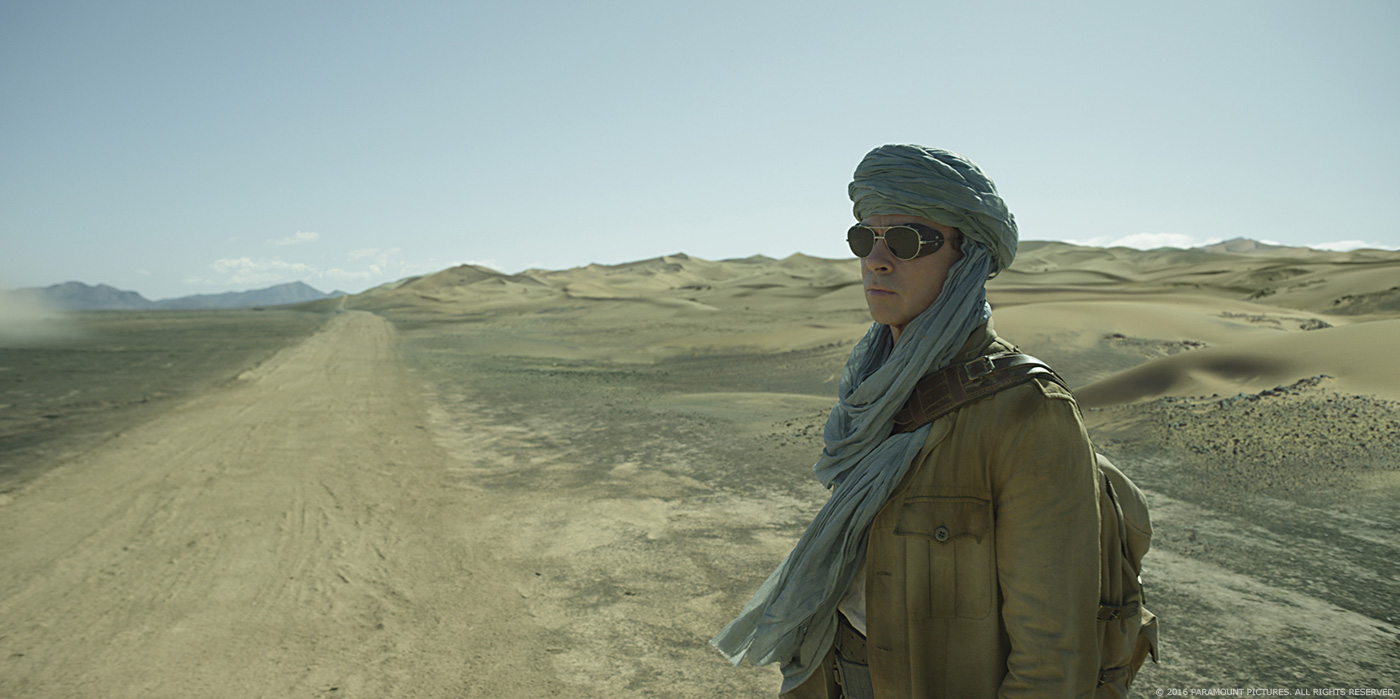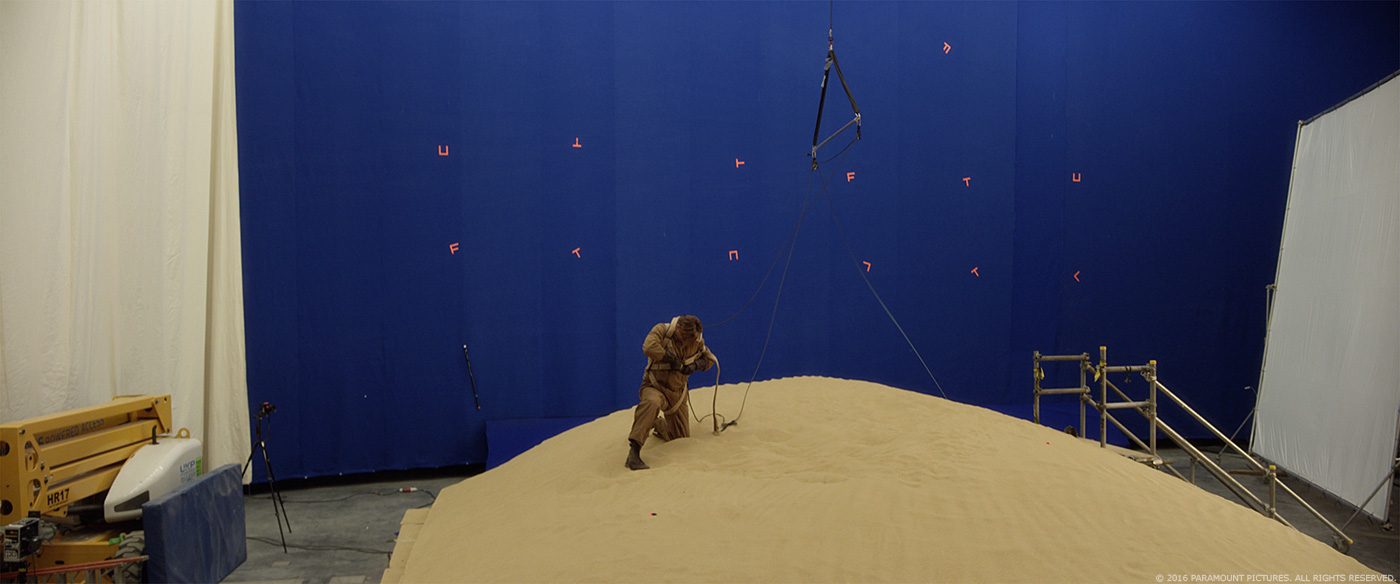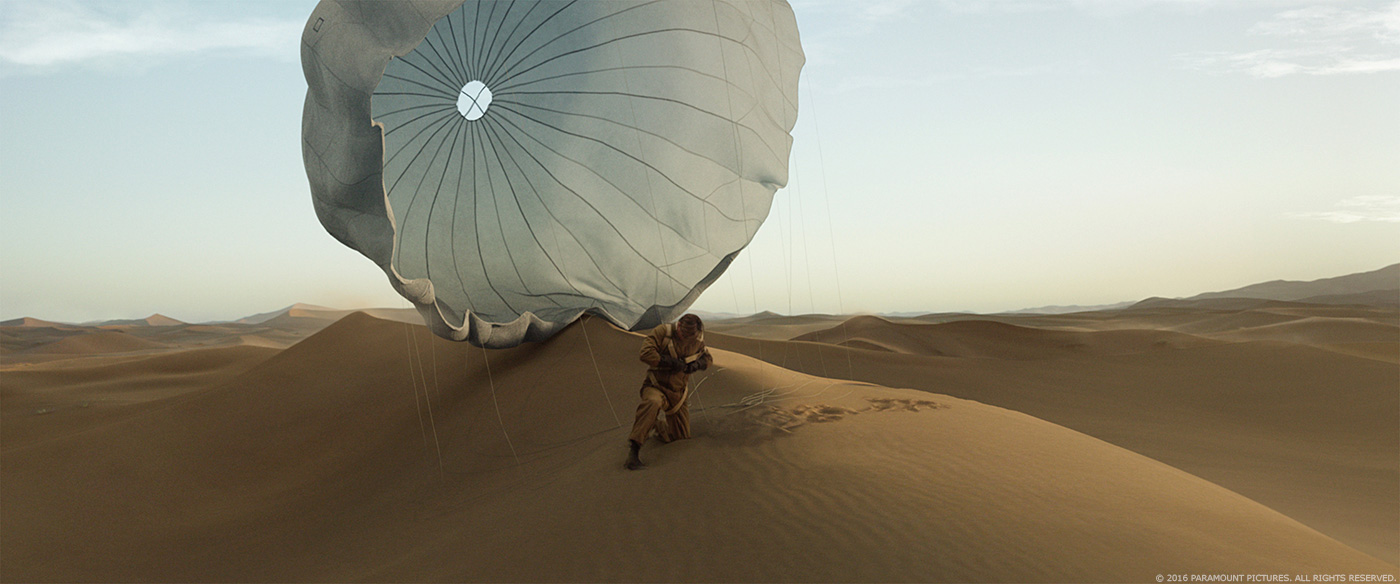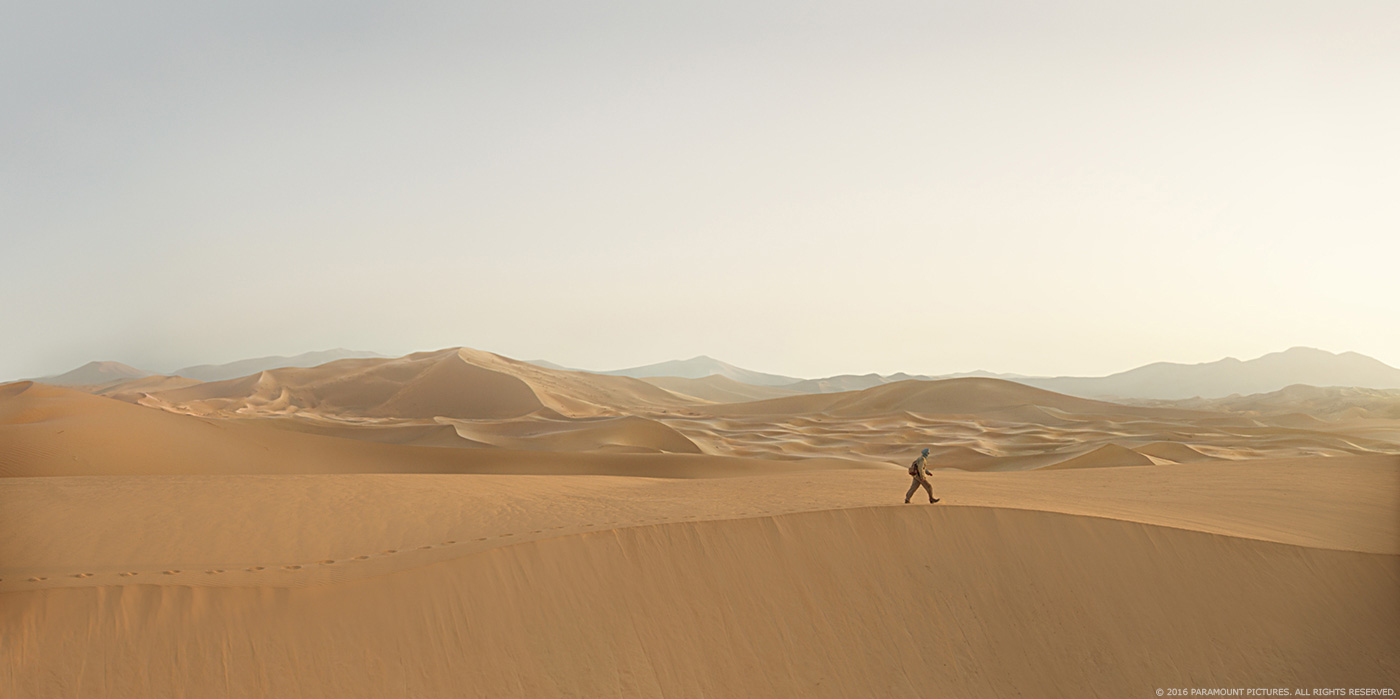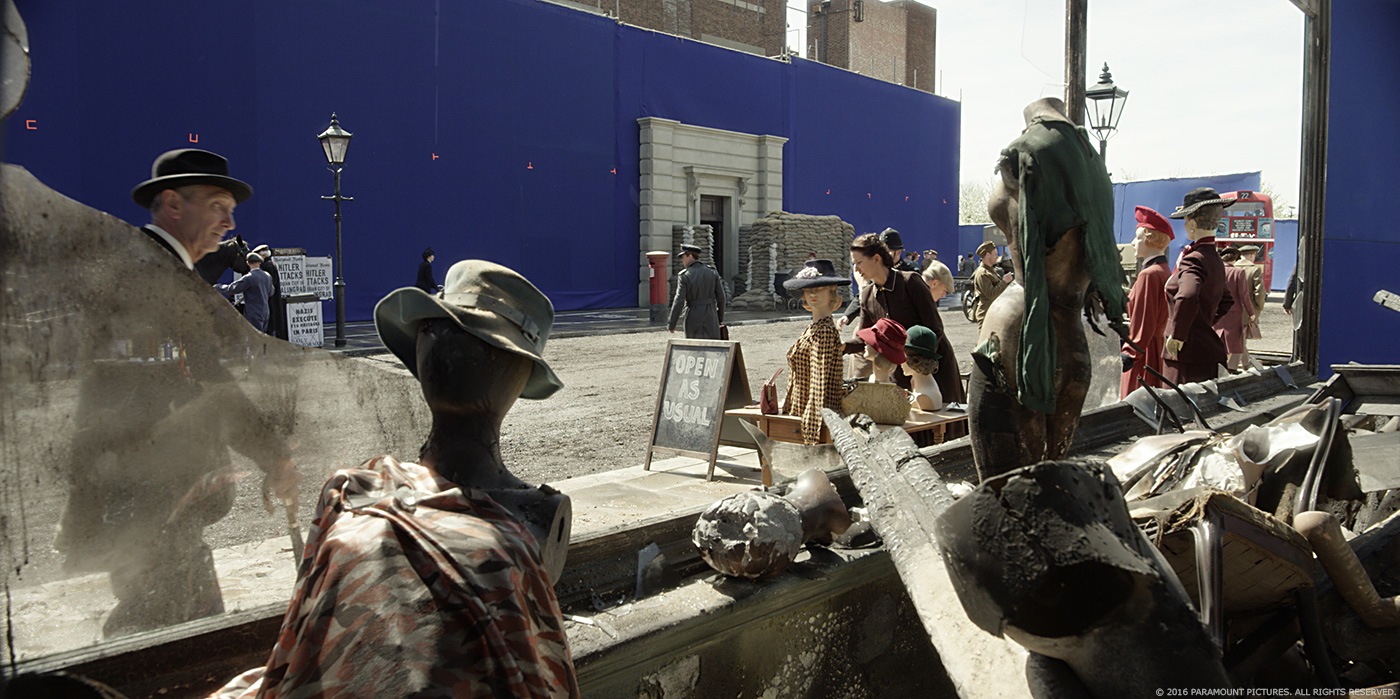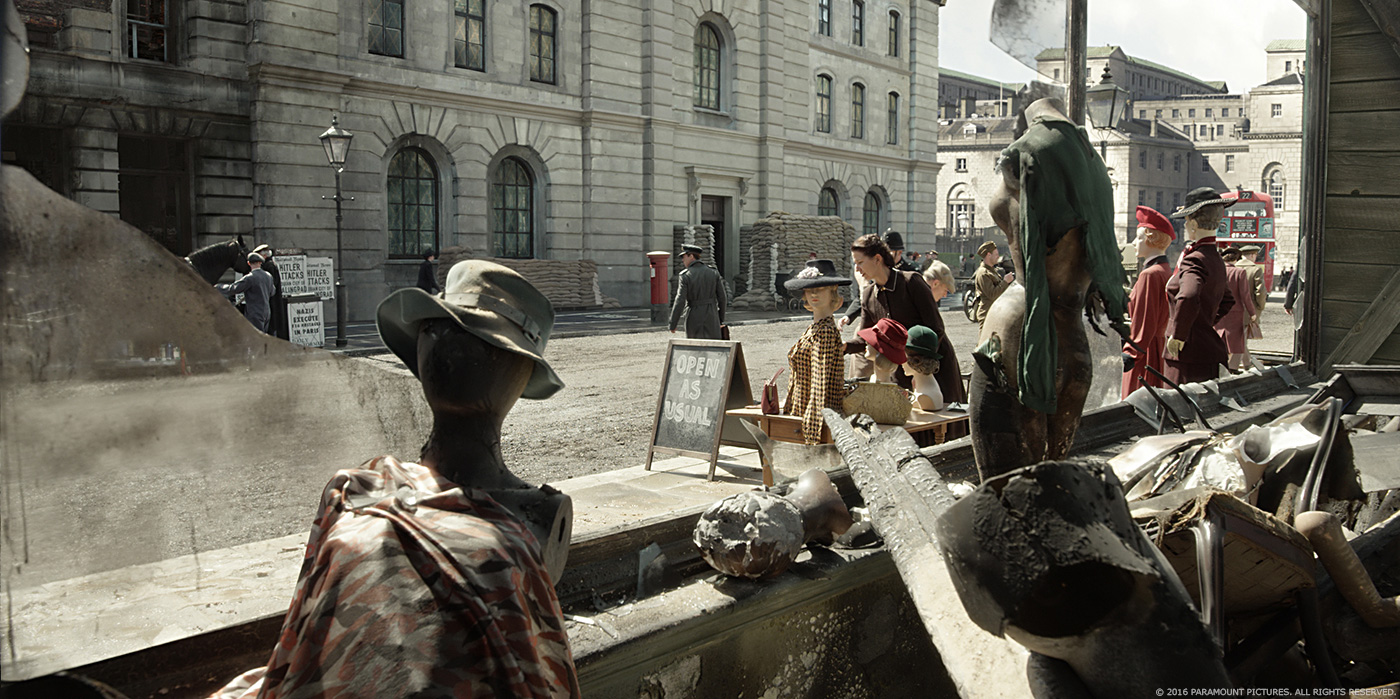Mike Janov has been working in the visual effects for over 20 years. He has worked for many studios such as The Orphanage, Spy Post, Industrial Light & Magic and Atomic Fiction. As an Associate VFX Supervisor, he took care of the effects of SAN ANDREAS, GAME OF THRONES: SEASON 5 or DEADPOOL.
What was your feeling to work again with director Robert Zemeckis?
Working with Robert Zemeckis is always a treat! We’ve been fortunate to work with him in the past on THE WALK, FLIGHT, and a few other collaborations, so we’re very familiar with his process. It’s special to work with a director who is so deeply passionate about the story, has incredible attention to detail, knows exactly what he’s looking for (and what he’s not looking for!). All that, and he’s tech savvy! Every time we get the opportunity to work with Bob it makes for an exciting, creative, learning experience for everyone.
What was his approach and expectations about the visual effects?
Bob was clear early on that all the effects in this movie were there to support the story. The thing you realize right away when working with Zemekis is that the storytelling is hands down the top priority. Early on we were reminded this during a review with Bob. We were reviewing a shot where a bomber is crashing into a field of trees from a POV looking out a window. The plane was on fire, crashing into trees, explosions are going off, etc. Everything in the background is completely CG. Fire, explosions, sparks… pure CG chaos. The FG was a plate of a window with a curtain revealing the plane crash. The first time we showed this shot rendered and composited to Bob, the shot looped maybe about 10 times, Bob was in complete silence. He then says to Kevin Baillie “I need to talk to you about the Drapes…” Here we are, excited to show off all the cool effects we’ve been working on, and Bob’s focus is purely on the story he’s trying to tell, which had to do with the timing of the curtain reveal of the event. Story is king, and visual effects are there to support the story.
This show had a crazy schedule because it was shot and deliver in the same year. How did you approach the challenge?
It was a pretty aggressive schedule. Principal photography began in February 2016, and we needed to deliver 776 shots by November the same year. With such a quick turnaround, a divide-and-conquer approach was needed. Atomic Fiction took on roughly half of the shot count, and the remaining shots were tackled by additional vendors UPP, Raynault and Lola.
How did you organize the work at Atomic Fiction between your various offices?
Atomic Fiction has studios in both Oakland and Montreal, and we attempted to simplify what each studio takes on by dividing the work up by sequences. Both studios handled shots with set extensions and environment enhancements. We split up the sequences with large FX shots to help balance out the work load. Oakland took on the bomber run / crashing sequence, and Montreal spearheaded the love sequence in the desert, and rain in the final act.
In some scenarios both studios shared a shot. A great example is in the opening shot of the movie where Max is parachuting into Morocco. The entire shot was a joint effort. Montreal handled the environment and camera work, Oakland focused on the Max to Digi-double swap, as well as his parachute simulation.
Can you tell us more about the shooting of the movie and especially the Morocco and Casablanca sequences?
Shooting started in London on sets, and then went to several locations around the city. Shooting also took place at the Canary Islands in Las Palmas and Fuerteventura. Helicopter footage was captured using 8K Red Weapons in Morocco for the opening shot of the movie with Max parachuting in. For the driving shots that take place in Casablanca, LED panels were brought on set, and arranged around Max and Marianne. This served to be multi-purpose as it assisted with interactive lighting on the actors which eventually would help integrate them into driving plates. It also gave them something to act against, and helped them understand what their environment was, rather than being surrounded by a blue screen.
How did you create the desert environment?
For the desert environment, we actually started with photogrammetry shot from a Helicopter that Kevin Baillie had acquired while in Morocco. What was great about this was it allowed us to stage the shots across a large environment and choose where was best for the action to happen. Essentially it was digital location scouting led by our CG supervisor Laurent Taillefer. So, once a spot was chosen and layout was happy, our modeler Mike Song went in and did a high resolution re-sculpt of the entire environment with a few artistic embellishments to help the shots compose well.
Once the location and geometry were set, we could start with a base of the photogrammetry source projected across the environment and then our matte painters filled it all in to make it feel like a desert. Sand is surprisingly reflective, so on top of the normal matte painting, we displaced the entire environment and rendered real reflections for the sky and sunrise. Having that strong base geo from the photogrammetry really helped when we needed to simulate the blowing desert sand that makes an otherwise barren scene come alive.
There are many wide shots of Casablanca seen from the hero’s rooftop. Can you explain in details about the creation of this city?
When we were evaluating blue screen plates of Max and Marianne on a rooftop set, that would require a replacement of panoramic views of Casablanca, one thing we noticed early on was that each shot was at a slightly different angle. This made it so the environment couldn’t simply be done with matte paintings. A very detailed 3D environment was built, that consisted of about 35 buildings, repurposed along a five-mile radius, and then populated with digital crowds to add life to the city. This allowed the camera to be dropped into any anticipated angle, with plenty of 3D coverage to go around.
How was your experience on THE WALK useful for this show?
Working on THE WALK really evolved our pipeline by helping us to work on large shots across studios, and improve cross-site data synchronization. Many tools have been developed to help communication between our Oakland and Montreal studios. Atomic Fiction began using Katana and Vray to meet the demands of rendering massive amounts of model and texture data for downtown NYC. We also made a switch to Shotgun, to help manage our assets and cross-site syncing. Having made such significant changes for THE WALK, gave us the architecture needed for the work on ALLIED, DEADPOOL, STAR TREK BEYOND, and all shows moving forward.
A sandstorm is happening during a love sequence. Can you tell us more about its creation?
The sandstorm was a combination of several elements that all ramped in intensity as the scene progressed. This allowed different artists to tackle the challenges of each component, and bring the scene up as one.
There was a subtle ground sand that flowed across the surface, the sand shooting off of dune edges, dust billowing off the ground, the thick cloud that started to form, and even the piles that started to build up on the car. All these were different elements that had to be created separately, but flow together as would actually happen in a real desert. James Kirk, our FX lead, was able to guide the team in creating these systems with the cohesion needed to keep it from feeling as if it were different elements. On top of that, nearly the entire car interior is CG. To light this, our lead lighter, Bruno Gagne, worked with James to illuminate the scene with an HDR produced from the actual FX clouds outside. So, the pulsing light that builds as the storm increases is actually sourced directly from the FX elements.
As for the comp, the plates were all shot on set with a complex LED light rig that fluctuated and allowed for the same changes that CG represented in the background. The challenge here is always the trade-off that if you shoot with LED panels you can’t work with a blue screen as much, so a major success of the compositing team was recreating hair and balancing the edges. Even though that was challenging, the end result was so much more convincing because of the believable lighting on the foreground that helped fuse the CG with the real plates. The comp and FX departments, working together, completely realized the story Bob was trying to tell, and the change in mood as the scene progressed. Jed Smith, our Lead Compositor, helped drive much of the art direction of the scene, by balancing the elements and lighting to shift from sunrise to total sandstorm.
How did you created the wide shots of London seen from Hampstead Heath?
This entire environment was a large matte painting that was created by Julie Joannoteguy. The challenge here was creating a convincing period accurate city, when nearly all your reference material is either too modern, or so old that it was too low quality to clearly see anything. We had a lot of photography from modern day Hampstead Heath, so we were able to see what the surrounding terrain and city layout was like, but now days there are too many skyscrapers. Julie did a great job keeping the feel of the city while making it appear staged in the 1940s.
There are two big sequence featuring the anti-aircraft defense in action. How did you create the FX elements?
We were tasked with creating anti-aircraft for a sequence where German bombers are making a bomb run while Brad Pitt and Marion Cotillard are attending a party. The foundation of this scene started with Pre-vis. Animators Julie Jaros and Mike Dacko strategically placed bombers in the sky at different elevations, slightly different formations, and different speeds. They also hand animated searchlights that were rigged to have additional noise in the rotations of the spotlight. This gave the spotlights a human feel to their movement, and less mechanical or key framed.
FX artists would use the bounding box of the airplane animation to drive an FX rig that would create tracer fire and flak. Rigel Bowen created an FX rig that would pick certain bombers in the sky and fire at them based on logic that would evaluate when an airplane was being illuminated by a spotlight, anti-aircraft would be slightly favored to attack what was being lit up (more visible and easier targets!) Tracer fire was rendered out of Houdini, and hundreds of explosions were rendered out of Katana. An important aspect we aimed for in this sequence was to have interactive light and reflections from the explosions to interact with the bombers, clouds, and lingering flak smoke. This was a perfect scenario for us to explore the file format Open VDB. Deb Santosa worked closely with Houdini artist to develop a shader in Katana using the VrayVolumeGrid. Marc-Antoine Paquin developed a system that would take points from Houdini that represented location, rotation, scale, time offset, and the path to the cached explosion sim. In Katana, a group of 10 individual explosions would instance to the points, and inherit attributes of the point. Having the majority of FX elements come from the same renderer as the rest of our CG pipeline, allowed for things to be more predictable and helped compositors get consistent looking elements.
Can you explain in details about the falling German bomber?
During that same bomber run, one of the bombers engines get struck by anti-aircraft, catches fire and the aircraft beings to descend. The plane banks and heads towards camera, heading right towards Brad Pitt. He notices, runs into the house where Marion is, and attempts to protect her. Fortunately, the plane misses the house! The plane ends up crash landing just behind the house into the patch of trees.
We approached the German bomber crash by first blocking animation of the airplane crash landing into the ground, continuing to slide off into the distance over a hill. We used this animation as the foundation for driving our FX. The environment consisted of a small forest of destructible trees rigged in Houdini. The trees were rigged with a constraint system that consisted of both rigid constraints that would break by force, and cone constraints that would twist, bend and break based on the actions of their neighbors or collider. This allowed us to keep the trees motionless until affected by movement. Once in motion, one section would affect the other, giving the feeling that every branch was being affected individually and as part of an entire entity (just as a tree would in the real world). For the ground, we used a grain solver, which gave us an amazing variety of chunks at the location of impact, and anything else hitting the ground. Fire, explosions, and dust were also simulated in Houdini and rendered in Vray for Katana.
Other vendors came on board to created VFX shots. Can you tell us more about it?
We invited UPP to join us on ALLIED as well, since our two studios had a great working relationship during THE WALK. Atomic Fiction and UPP split the bulk of the 776 shots fairly evenly, and two additional vendors were brought onboard to help with other needs. Lola VFX in Los Angeles took on the challenge of cosmetic fixes, and Raynault VFX in Montreal assisted with the creation of 7 shots, a small but challenging package!
Is there any invisible effects you want to reveal to us?
Because this movie takes place in the 1940’s, our goal was to make all of the effects invisible! That’s what was so great about working on this film. There was such a commitment to properly representing the era, and we always felt that the visual effects had to be invisible to make the story believable.
What was the main challenge on this show?
Mainly the schedule. Fortunately, we were able to rely on our cloud rendering platform, Conductor. With a schedule this aggressive, unlimited rendering resources makes a delivery like this possible. That, and amazing vendors helping out.
What do you keep from this experience?
With smart planning and a solid roadmap, the right crew, and the correct tools and pipeline in place, movies can be created efficiently!
How long have you worked on this film?
Atomic Fiction was fortunate to be involved from the very beginning. Pre-production started in the Spring of 2015, photography started the following February, and post-production lasted just 4.5 months, from June until the end of October, 2016. The release was immediately following that, in November. It was rapid-fire!
How many shots have you done?
A total of 776 VFX shots were done for ALLIED. That might not sound like a lot, but bear in mind they are ‘Robert Zemeckis’ length shots. On average, a visual effect shot averages 5 seconds, or less if it’s an action scene. Bob’s style tends to favor longer shots, with shots that can (and typically do) last 15 seconds or longer!
What was the size of your team?
The VFX crew across the board, including Atomic Fiction, UPP, Raynault, & Lola, you’re looking at approximately 300-400 folks.
What is your next project?
We are wrapping up on the latest PIRATES OF THE CARIBBEAN, which is going to be great! Our team is also hard at work on some really fun projects, including GHOST IN THE SHELL, TRANSFORMERS; THE LAST KNIGHT, ALIEN COVENANT and BLADE RUNNER 2049.
A big thanks for your time.
// WANT TO KNOW MORE?
– Atomic Fiction: Official website of Atomic Fiction.
© Vincent Frei – The Art of VFX – 2016



